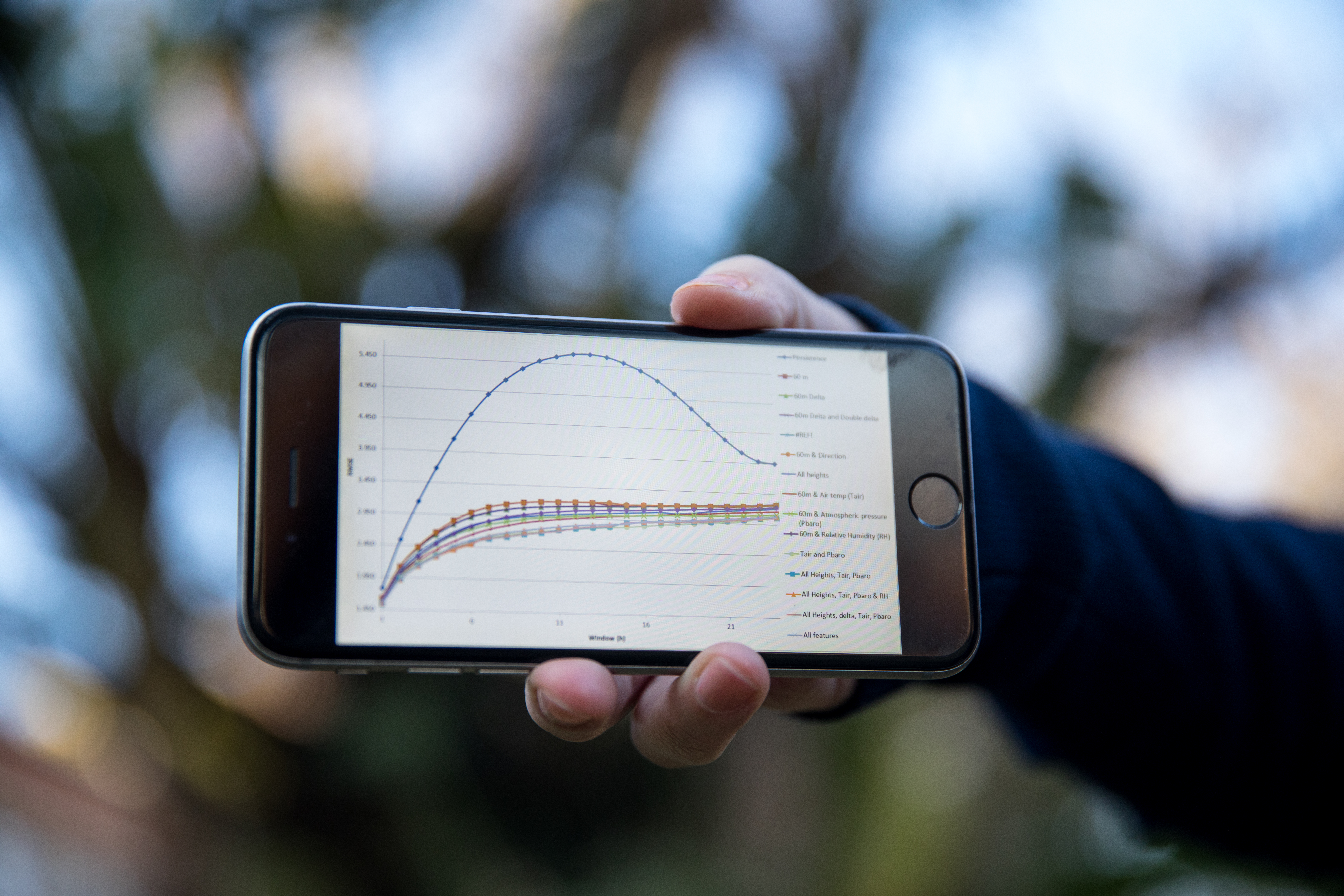The science of wind forecasting: Developing wind forecasting techniques
The ability to forecast wind speed is becoming more important as South Africa adds renewables to its future power system. An earlier study by CSIR and German researchers quantified the combined effect of wind and solar energy resources in South Africa and concluded that it is a viable source of renewable electricity. Wind farms can be established across the country, but a successful system will need to incorporate wind speed forecasts that rely on mathematical algorithms. CSIR researchers are building local capacity in this field of mathematical modelling.
The ability to forecast wind speed is becoming more important as South Africa adds renewables to its future power system.
An earlier study by CSIR and German researchers quantified the combined effect of wind and solar energy resources in South Africa and concluded that it is a viable source of renewable electricity. Wind farms can be established across the country, but a successful system will need to incorporate wind speed forecasts that rely on mathematical algorithms. CSIR researchers are building local capacity in this field of mathematical modelling.
“Wind patterns are fairly consistent from year to year, but over shorter time scales, such as hours or days or even minutes, it is notoriously variable and difficult to predict,” says Dr Nicolene Botha, a CSIR mathematical modeller. She worked with Dr Christiaan van der Walt, a lead researcher in the field of machine learning, as part of a CSIR team that uses South African wind data to develop wind forecasting techniques.
One of the renewable energy projects of the South African National Energy Development Institute is to map wind resources in the country to produce the Wind Atlas for South Africa (WASA). The atlas contains a large quantity of data that mathematical modellers can use to find trends in wind patterns.
“We chose data from Alexander Bay for our project. At first, I thought that I could use fairly simple functional data analysis, but quickly realised that there are no clear trends and that wind patterns tend to be fairly chaotic. We then decided to use more complex machine learning techniques on time series data to see if we could forecast wind 1 to 24 hours ahead in hourly intervals.”
Botha and van der Walt used a persistence forecast (where the previous measurement is used to estimate the next) to approximate the wind speed as an initial forecast benchmark. Several machine learning regression algorithms were tested and all improved on the benchmark forecast, with support vector regression outperforming the other algorithms.
”We recently presented a conference paper on some of our work at the 27th Annual Symposium of the Pattern Recognition Association of South Africa and are now building on that work. In addition to wind speed data, we are also adding atmospheric readings that we get from the WASA, for example, air temperature, relative humidity and wind speed direction. We are adding these to our algorithm to further decrease the error in our forecasting.”
Predicting wind speed a few hours ahead of the time would enable better estimates of potential wind electricity production and allow for better planning to balance energy production from different sources. Wind power relies on the air flow through wind turbines to mechanically power generators that produce clean energy with no greenhouse gas emissions.
The earlier study in which the CSIR partnered with Germany’s Fraunhofer Institute for Wind Energy and Energy System Technology managed to quantify the combined effect of solar and wind energy sources.
South Africa has abundant wind and solar resources, but these fluctuate naturally and continuously. Wind speeds vary greatly from hour to hour and cloud cover continuously changes. It is important to understand this variability in the context of a stable power system for the country.
The study results showed that across South Africa, solar photovoltaic and wind resources are good enough to be able to produce globally competitive solar and wind power and that over 80% of the land mass has enough wind potential to achieve a 30% average annual load factor. The load factor is a measure for the average utilisation of wind turbines. In countries like Spain and Germany, which are known for their good wind resources, actual average load factors of the entire wind fleets are 25 – 27% and 20 – 23%, respectively. The ‘good wind resource’ is not restricted to the Cape area, as was previously thought, and therefore wind plants can be established almost everywhere in South Africa.
The results also indicate that wind and solar photovoltaic installations can provide a smooth power output when the power plants are dispersed over a large area. “Developing better algorithms for wind forecasting could mean that other power generators on the country’s electricity grid can manage their power output in advance rather than on short notice as the wind fluctuates,” says Botha.
She says that the volume of data in the WASA is a valuable resource enabling mathematical modellers at the CSIR to build capacity in wind forecasting so that the country has local expertise to manage a future power system rather than relying on outsourcing.



